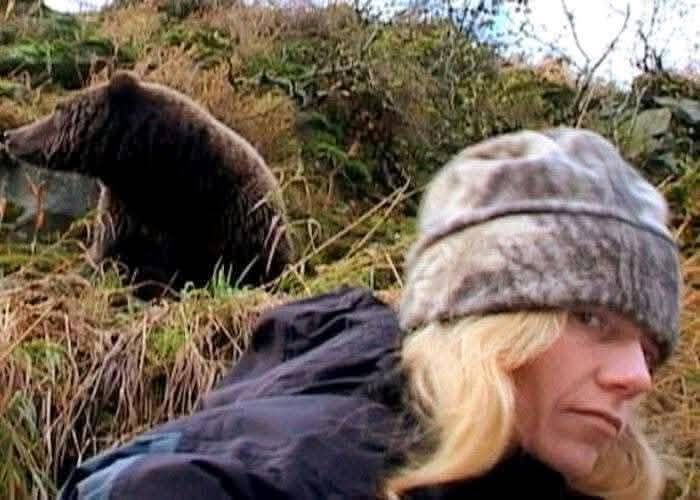Remembering Timothy Treadwell and Amie Huguenard: A Tragic End to a Passionate Life Among Alaska’s Grizzly Bears
KATMAI NATIONAL PARK, ALASKA – On October 5, 2003, the world was shaken by the harrowing and tragic deaths of Timothy Treadwell and his girlfriend, Amie Huguenard, who were fatally mauled by a grizzly bear in the remote wilderness of Katmai National Park in Alaska. What began as a summer dedicated to studying and living among bears ended in a fatal encounter that highlighted the dangers of coexisting so closely with wild predators — and sparked an international conversation about wildlife conservation, boundaries, and the passion that sometimes pushes those boundaries too far.
Timothy Treadwell, 46, was a charismatic and controversial figure in the world of wildlife advocacy. A former actor turned environmentalist, he spent 13 consecutive summers in Katmai National Park, living among brown bears in an effort to document their behavior and protect them from poaching and harm. His mission was personal and profound: to serve as a voice for the animals he believed were misunderstood and mistreated.
By his side during the fateful 2003 expedition was Amie Huguenard, 37, a physician’s assistant from Colorado who shared his love for the natural world. Though more cautious than Treadwell, Huguenard had accompanied him on several prior excursions and stood by his side despite growing concerns about their safety — concerns tragically realized in their final days.
Authorities believe the attack occurred as the couple prepared to leave the park for the season. The bear responsible — an older, underweight male unfamiliar to Treadwell — likely stumbled upon the campsite and attacked in search of food. Audio from a video camera, found later at the site with the lens cap still on, captured the horrific final moments of the encounter, though no visual footage was recorded.
Their remains were discovered by a bush pilot who arrived to pick them up and found the campsite in disarray. The bear that attacked them was killed by park rangers shortly after, as it exhibited aggressive behavior and remained near the scene.
Treadwell’s death was met with a mixture of sorrow, admiration, and criticism. While many praised his unorthodox but passionate devotion to bear conservation, others — including wildlife experts — viewed his approach as reckless and anthropomorphic. Treadwell eschewed traditional safety measures, such as carrying bear spray or erecting electric fencing around his camp, choosing instead to interact closely with the animals in a way that defied standard wildlife protocol.
Filmmaker Werner Herzog captured the complexity of Treadwell’s life and death in the critically acclaimed 2005 documentary Grizzly Man, which used Treadwell’s own extensive video footage to piece together his final months and the philosophy that drove him. In the film, Herzog reflects on the beauty, madness, and vulnerability behind Treadwell’s mission — a mission that ultimately cost him and Huguenard their lives.
Amie Huguenard, often described by friends as intelligent, kind, and introspective, was less publicly vocal but equally courageous. Those who knew her say she found strength in nature and believed in Treadwell’s vision, even if she sometimes feared the risks.
Today, more than two decades later, the story of Timothy Treadwell and Amie Huguenard continues to resonate. It serves as both a cautionary tale and a poignant reminder of the deep, complicated relationships humans can form with the wild. Their deaths have influenced how researchers and conservationists approach fieldwork, especially in close proximity to apex predators.
Katmai National Park has since implemented stricter guidelines for bear observation, encouraging visitors and scientists to maintain safe distances and prioritize both human and animal safety.
While their lives were cut short in the most tragic of ways, the legacy of Timothy Treadwell and Amie Huguenard endures. Treadwell’s recordings, journals, and advocacy materials remain part of educational programs about bear behavior and conservation. Their story, heartbreaking and controversial, continues to raise important questions about passion, boundaries, and the complex intersection of humanity and nature.
In remembering them, we are called not only to reflect on the risks of wild immersion but also to honor the deep love and dedication they showed to a world they felt was worth protecting — no matter the cost.

